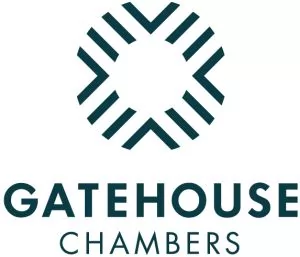In this series of two articles, we will discuss points of interest arising from the recent case Barclays Bank UK PLC v Terry & Anor ("the Barclays litigation", "Barclays" and "Mr and Mrs Terry") in which the writers were counsel for the defendants. This, the first article, discusses a point of substantive law (the court's exercise of its equitable jurisdiction to rescind disposition made as a result of a unilateral mistake) the focus of the second article will be procedural (re: representative claims under CPR 19.8).
Background
The case had (by the standards of commercial litigation) a relatively short, but very compact/heavy, procedural history, with six hearings taking place between 12th October 2023 and 29th February 2024 in front of four different judges sitting in the Chancery Division. It concerned the accidental discharge of over 5,000 charges at HM Land Registry which were all secured extant mortgage loans made by Barclays. The writers were instructed by Moore Barlow LLP and acted for the representative defendants, Mr and Mrs Terry, and the underlying represented class of affected persons, a mixture of other borrowers/proprietors and third-parties with interests in the borrower's titles.
The mistake
In the usual way, Barclays secures its mortgage lending to borrowers by way of charges registered against the title of the borrower. These charges appear on the title register for each property at HM Land Registry. Barclays, like many large banks, has a mortgage book which number in the many tens of thousands. A charge will often become defunct because the underlying mortgage loan which the charge secures has been redeemed but someone has forgotten to remove the relevant registered charge. The result is that there are many defunct charges at HM Land Registry which are manually removed by an application to the Registrar.
To address this issue, Barclays pioneered a computer programme to automatically remove defunct charges from HM Land Registry ("the Programme"). In the eleven months building up to September 2023, Barclays developed and tested the Programme, which would interface with HM Land Registry's own computer software.
Barclays held an internal meeting known as the "Go/no-go" meeting in September 2023 at which it was decided that the Programme would be run on a test of over 41,000 charges. Crucially, the decision-makers at the meeting were satisfied that all of the 41,000 charges were no longer securing loans. This belief turned out to be mistaken. It was subsequently determined that the list used or produced by the Programme was inaccurate.
As the Programme ran for the first time in a live situation, over 5,000 charges securing live (i.e. unredeemed) mortgage loans were discharged. HM Land Registry and Barclays began receiving queries from borrowers who had discovered the issue. The Programme was shut down, but not before the damage was done. The effect of a discharge at the Land Registry is to cause the charge to cease to exist in law and equity: Garwood v Bank of Scotland [2013] EWHC 415 (Ch) at [54]. Barclays therefore needed to unwind (i.e. rescind) the mistaken discharge.
Court's jurisdiction to rescind a unilateral mistake
The leading authority on rescission of dispositions for unilateral mistake is Pitt v Holt [2013] UKSC 26. The Supreme Court held, (as helpfully later summarised by Sir Terence Etherton C (as he then was) in Kennedy v Kennedy [2014] EWHC 4129 (Ch)):
"(1) There must be a distinct mistake as distinguished from mere ignorance or inadvertence or what unjust enrichment scholars call a 'misprediction' relating to some possible future event. On the other hand, forgetfulness, inadvertence or ignorance can lead to a false belief or assumption which the court will recognise as a legally relevant mistake. Accordingly, although mere ignorance, even if causative, is insufficient to found the cause of action, the court, in carrying out its task of finding the facts, should not shrink from drawing the inference of conscious belief or tacit assumption when there is evidence to support such an inference.
(2) A mistake may still be a relevant mistake even if it was due to carelessness on the part of the person making the voluntary disposition, unless the circumstances are such as to show that he or she deliberately ran the risk, or must be taken to have run the risk, of being wrong.
(3) The causative mistake must be sufficiently grave as to make it unconscionable on the part of the donee [i.e. the beneficiary of the mistake] to retain the property. That test will normally be satisfied only when there is a mistake either as to the legal character or nature of a transaction or as to some matter of fact or law which is basic to the transaction. The gravity of the mistake must be assessed by a close examination of the facts, including the circumstances of the mistake and its consequences for the person who made the vitiated disposition.
(4) The injustice (or unfairness or unconscionableness) of leaving a mistaken disposition uncorrected must be evaluated objectively but with an intense focus on the facts of the particular case. The court must consider in the round the existence of a distinct mistake, its degree of centrality to the transaction in question and the seriousness of its consequences, and make an evaluative judgment whether it would be unconscionable, or unjust, to leave the mistake uncorrected".
The last limb, unconscionability, will involve consideration of any potential defences. Typically, these could be a 'change of position' (i.e. that the non-rescinding party, having had the benefit of the mistake, which had then been lost, it is unfair to require restitution) or estoppel (i.e. the rescinding party has represented, expressly or impliedly by conduct, to the non-rescinding party that they are entitled to the benefit of the mistake, and the non-rescinding party has then detrimentally relied on that representation, such that it is unconscionable to go back on the representation). It will not often be easy for the beneficiary of a mistake to establish change of position or estoppel; but they may, more commonly, have the right to seek 'counter-restitution'. That will see the court order rescission, but only on the basis that the court can achieve restitutio in integrum, i.e. to put the parties, so far as is possible, in the position they were in before the mistake. This usually involves the payment of money in compensation for any financial loss caused. In a mortgage discharge context, that could, for example, be a sum to reflect any losses flowing from a delayed sale to a third-party or remortgaging with a third-party lender. It is only if counter-restitution is impossible for practical reasons that it morphs into a proper defence of change of position.
In the context of mistaken mortgage discharges, rescission had been ordered in at least two prior reported cases: Garwood v Bank of Scotland [2013] EWHC 415 (Ch)1 and NRAM Ltd v Evans [2015] EWHC 1543 (Ch) and later in the Court of Appeal [2017] EWCA Civ 1013. In both cases, an employee of the lender made a decision to discharge the charge on the request of the borrower, and the employee had a mistaken belief about what ought to be discharged and why: in Garwood, the request was to redeem one loan when the charge also secured a second loan, and in Evans whilst the original loan secured by the charge had been redeemed, the charge still secured a replacement consolidated loan.
The decision of HHJ Matthews
In the second hearing of the Barclays litigation, HHJ Matthews gave summary judgment, finding there had been a mistake and that it was one in respect of which the court should exercise its discretion to rescind of the discharge, albeit only in respect of the representative defendants' charge at that juncture.
That was on the basis that: (i) the Programme was a lengthy and careful project, taking some eleven months to devise and test; (ii) Barclays reacted immediately once it realised what had happened and was alerted to the existence of the mistake, and (iii) there was a complete lack of any sensible explanation as to why Barclays should discharge thousands of mortgages which still had associated loans outstanding (see judgment at [21]).
Mr and Mrs Terry did not argue that it would be unconscionable to order recission [30]. It was not a case where a defence (e.g. change of position, estoppel or the need for counter-restitution) could be advanced on their part.
However, the position of Mr and Mrs Terry would not necessarily apply for all borrowers/proprietors and third parties, so directions were set down for further hearings (which multiplied during the course of the litigation).
Subsequent decisions of HHJ Keyser KC and Bacon J
Subsequent hearings dealt with tranches of borrowers/proprietors and third-parties who were grouped together by similarities in titles. In broad terms, these were titles where Barclays did not seek priority to any other interest (e.g. a restriction or charge) on the title, or where more tailored treatment was required (e.g. where no priority was sought over an earlier charge originally ranking in priority to Barclays' charge but where priority was sought over a charge originally ranking behind Barclays' charge).
In advance of these hearings, the writers (with Moore Barlow) advised numerous borrowers/proprietors and third-parties, some of whom simply needed an explanation of what had happened, though others needed tailored advice. The writers deal with this further in the second article, but in broad terms, borrowers often needed advice on how to protect their position in circumstances where the mistake had adversely impacted ongoing sales or re-mortgaging. In most cases, this involved the use of undertakings (discussed below).
Significance for future unilateral mistake cases
The focus of the court's enquiry is two-fold: (1) has there been a qualifying mistake and (2) if there has been, is it unconscionable to rescind the mistake?
(1) AI and qualifying mistakes
The case raises the counter-factual question about what would have happened if Barclays had not sought to rely on the 'Go/no-go' meeting as the qualifying mistake, but only on a mistake internal to the Programme instead (a mistake which in fact could not be identified with certainty in this case). Indeed, there may now or in the future be fully automated such systems where there has been or will be no 'Go/no-go' meeting or decision by any human being. There may also be what is referred to by those in the artificial intelligence sphere as the 'black box problem' – i.e. where lack of transparency and interpretability in AI algorithms means users simply cannot say with confidence how an AI system has arrived at its conclusion (and, therefore, whether or not it can be traced to a conscious human error).
If the mistake is presented as simply 'something went wrong with the software', or can be shown to have been generated simply by AI itself (i.e. creating its own rules), then that would present a challenging conceptual issue for the court, which may take the (attractive) view that this was a case of 'mere causative ignorance' (in the words of Pitt v Holt) and would therefore be incapable of being a qualifying mistake. The requirement for advertence (as opposed to inadvertence) for there to be a qualifying mistake presupposes that it is a human who is making that mistake, and not an unconscious machine or a programme making it of its own accord. In addition, even if an error can be traced back to a human mistake in terms of the coding or manipulation of the software, the less related the outcome is to the human mistake, the less likely it will amount to a mistake in the sense which grounds relief because of the requirement that the mistake be "either as to the legal character or nature of a transaction or as to some matter of fact or law which is basic to the transaction". These points (to the author's knowledge) have not yet been grappled with by the courts of England Wales but, with the advance of AI, it is surely going to become a bigger and indeed recurring issue. They have received some treatment in the section on 'automated processes' in Goff and Jones on the Law of Unjust Enrichment (10th edition, Sweet and Maxwell, 2022) at 9-56 to 9-61, but which does not deal with the further challenges that AI presents.
In that sense, until a higher court extends qualifying mistakes to those beyond conscious human-error, the Barclays litigation is a helpful reminder to parties seeking recission that if AI was involved in the mistake, they are well-advised to find a way to frame their claim for rescission as one of human error (which in some case may not, of course, be possible).
(2) unconscionability: counter-restitution and the value of undertakings
The vast majority of borrowers/proprietors and third-parties were not impacted by the mistake at all (or, at least, did not complain that they were). However, there were some borrowers who found that the sale or remortgaging of their property was, or was at risk of being, delayed or otherwise negatively impacted by the mistake. The most helpful tool for dealing with these borrowers' cases was the use of undertakings for compensation.
In broad terms, Barclays gave voluntary undertakings that in the event the mistake caused a loss, it would indemnify the borrower for those losses. In practical terms this might include a period where a borrower had to pay a higher standard fixed interest rate on their mortgage, when they might otherwise have completed a remortgage and paid a lower rate; or possibly for additional costs caused by delayed conveyancing.
These were voluntary undertakings given to the court, not a contractual undertaking between the parties. The significance of that is in terms of enforcement. In the (unlikely) event Barclays did not honour the undertaking, the borrower with the benefit of the undertaking would be able to (and have to) bring contempt proceedings against Barclays, rather than bringing a fresh claim to enforce the undertaking, effectively as a breach of settlement agreement.
The value of the undertakings was that they were a flexible way to achieve counter-restitution, or at least. For all those borrowers impacted (whether or not they had the benefit of the undertakings, and most did not) there was also the option of using Barclays' internal complaints procedure, and, if that did not satisfy them, a complaint through the Financial Ombudsman Service. A complaint through the internal complaints procedure, if upheld, may lead to a payment for inconvenience or distress – a form of compensation which a court order in these kinds of proceedings would not contemplate, and which the counter-restitutionary undertakings given by Barclays would not encompass.
Footnote
1. Decided pre-Supreme Court decision in Pitt v Holt, but the decision is not in any tension with it.
The content of this article is intended to provide a general guide to the subject matter. Specialist advice should be sought about your specific circumstances.


